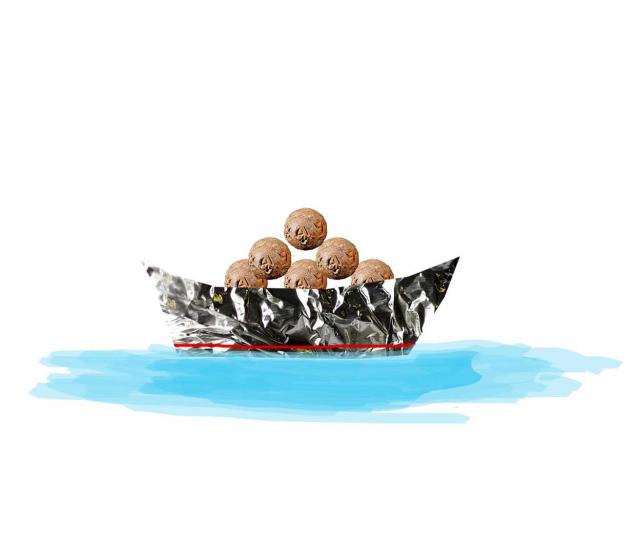FLOAT BOAT
An activity that shows that a material can sink or float depending upon its shape.
Materials
- Five balls of clay (the size required to make a roti) or five sheets of aluminium foil
- A tub half filled with water

- A few tiny pebbles or some sand
- An iron nail
- A mopping cloth
Procedure
- If you are using aluminium foil scrunch one sheet into a ball.
- Ask the children whether the ball (foil/clay) will sink or float.
- Drop one ball into the water.
- Now divide them into five teams and ask them what they can do to make the ball float. Give each team one ball.
- The team that can first make a boat which floats is the winner. If the team comes up with any other innovative way to make the ball float, let us know at the India Water Portal
- Draw a red line a little below the edge of each boat
- Start loading each boat with some pebbles or sand until the water level reaches the line
Teacher’s note:
You can start a discussion on ships after this activity. Drop the iron nail into the water and show  the children that it sinks. But ships made of iron float. Discuss about how water pushes a body up while the body’s weight pushes it down. When the body’s weight is lesser than the upward force that the water exerts, it floats. Else, it sinks. When the body’s weight is spread over a large area at the bottom, there’s more water that pushes the body up and can make it float.
the children that it sinks. But ships made of iron float. Discuss about how water pushes a body up while the body’s weight pushes it down. When the body’s weight is lesser than the upward force that the water exerts, it floats. Else, it sinks. When the body’s weight is spread over a large area at the bottom, there’s more water that pushes the body up and can make it float.
Discuss the Plimsoll line in ships. We can load cargo on to a ship until the water level reaches the Plimsoll line. If we load more than that, it would be unsafe and the ship may overturn.
/articles/float-boat